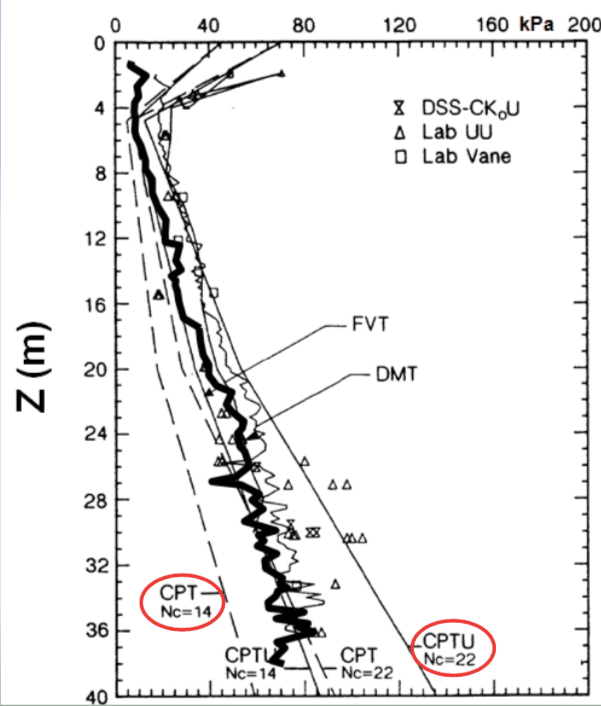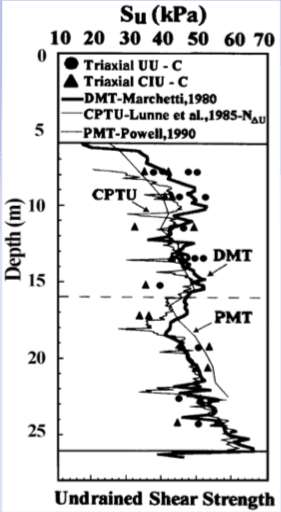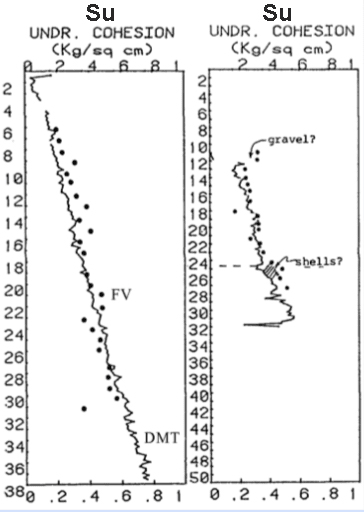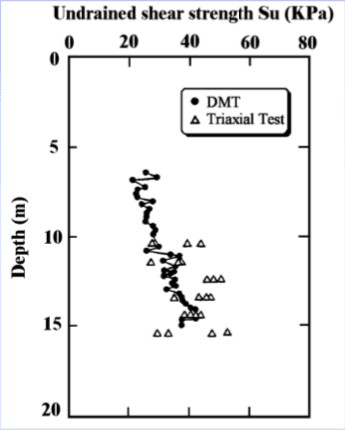




A.G.I., 10th ECSMFE Firenze 1991 Vol. 1, p. 37
CPT: different profiles according to Nc (=14-22)
Recife – Brazil

Coutinho et al., Atlanta ISC’98
Skeena Ontario – Canada

Mekechuk J. (1983). “DMT Use on C.N. Rail Line British Columbia”,
First Int.Conf. on the Flat Dilatometer, Edmonton, Canada, Feb 83, 50
Tokyo Bay Clay – Japan

Iwasaki K, Tsuchiya H., Sakai Y., Yamamoto Y. (1991) “Applicability of the Marchetti Dilatometer Test to Soft Ground in Japan”, GEOCOAST ’91, Sept. 1991, Yokohama 1/6
The Marchetti 1980 correlation for OCR in clays was OCR = (0.5 KD)1.56. It was obtained experimentally by interpolating a line through the then available high quality KD – OCR datapoints (Fig. 3a) . In 1995 that correlation was experimentally reconfirmed (Fig. 3a) by Kamey and Iwasaki (1995), based on KD – OCR datapoints from various clays they had investigated. In 1993 and in 2004 the correlation was independently confirmed theoretically by Finno (1993) and by Yu (2004), who used two different theoretical methods (Fig. 3b and 3c). Thus the 1980 OCR correlation has “empirical” and “theoretical” roots, and appears a well founded average, generally able to provide reasonable estimates of OCR in average “textbook” clays.
